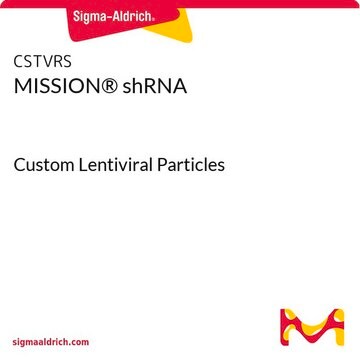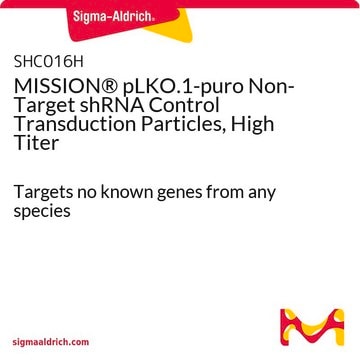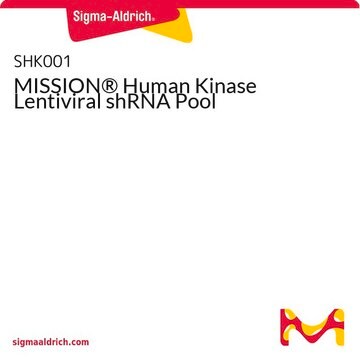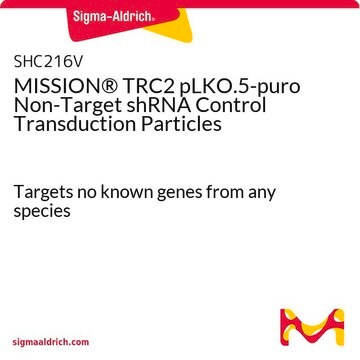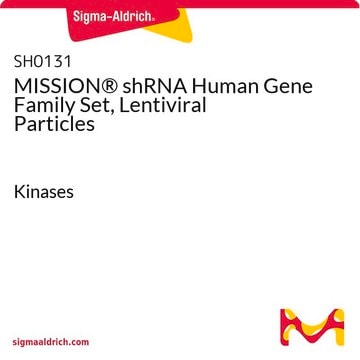Recommended Products
technique(s)
capture ELISA: 106 VP/mL using p24
shipped in
dry ice
storage temp.
−70°C
Looking for similar products? Visit Product Comparison Guide
General description
Application
- in transfections and transductions
- in the establishment of stable cell lines expressing shRNA
- in the generation of alpha-actinin-4 (ACTN4) knockdown cell line
- to transduce raw 264.7 cells
Other Notes
Legal Information
Storage Class Code
12 - Non Combustible Liquids
WGK
WGK 3
Flash Point(F)
Not applicable
Flash Point(C)
Not applicable
Certificates of Analysis (COA)
Search for Certificates of Analysis (COA) by entering the products Lot/Batch Number. Lot and Batch Numbers can be found on a product’s label following the words ‘Lot’ or ‘Batch’.
Already Own This Product?
Find documentation for the products that you have recently purchased in the Document Library.
Customers Also Viewed
Articles
MISSION shRNA reduce the expression of specific target genes by targeting the specific mRNA therefore reducing the corresponding protein expression.
MISSION shRNA reduce the expression of specific target genes by targeting the specific mRNA therefore reducing the corresponding protein expression.
MISSION shRNA reduce the expression of specific target genes by targeting the specific mRNA therefore reducing the corresponding protein expression.
MISSION shRNA reduce the expression of specific target genes by targeting the specific mRNA therefore reducing the corresponding protein expression.
Protocols
Lentivirus versions of genome modification technologies support successful CRISPR, RNAi, and ORF experiments.
Lentivirus versions of genome modification technologies support successful CRISPR, RNAi, and ORF experiments.
Lentivirus versions of genome modification technologies support successful CRISPR, RNAi, and ORF experiments.
Lentivirus versions of genome modification technologies support successful CRISPR, RNAi, and ORF experiments.
Related Content
Find shRNAs for Individual Genes. Over 150,000 pre-cloned shRNA constructs targeting more than 15,000 human and 15,000 mouse genes.
Our team of scientists has experience in all areas of research including Life Science, Material Science, Chemical Synthesis, Chromatography, Analytical and many others.
Contact Technical Service

